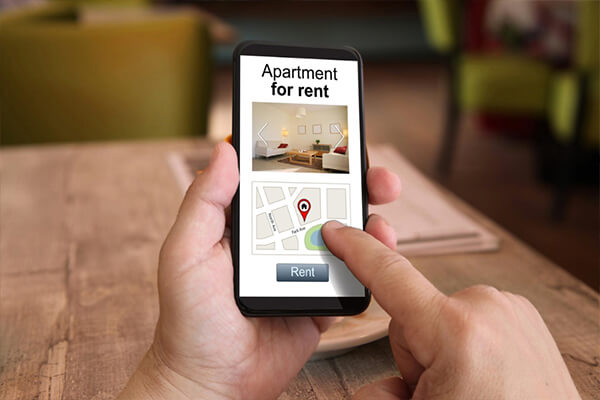How to Find an Apartment You Can Afford (Even in a Pandemic)
Since the start of COVID-19, much of the nation’s workforce has been a remote one. And now, it seems many businesses are looking to make that move a long term — or even permanent — one. While the prospect of a WFH life means more leggings and less pantsuits, it is also leading a lot of renters to ask themselves why they’re still living in their small, expensive apartments.
Typically, where you sign a lease is directly proportional to where you work. Work in a major city, and you’ll need a rental within commuting distance — even if you can barely afford it. But now, without a commute and with a recession to contend with, it makes sense to see what you’re really spending and if you can do better, whether you’re willing to move across the street or across the country.
Here’s how to find an apartment you can afford and will actually like living in:
How to Find an Apartment in 5 Quick Steps:
- Create a budget: Get to know what you can comfortably afford.
- Consider moving costs: Security deposits, pet fees, movers, factor all the costs in.
- Know your wants: Think about what you really need (and want) in a rental.
- Compare pads: View several apartments in your price range before you decide.
- Negotiate: Negotiating rent, move-in costs, and lease details to get the best deal.
Start With a Budget
Before you start looking for an apartment, decide what you can actually afford. Most experts recommend spending no more than 30% of your income on your housing costs — including utilities.
It is a good rule of thumb to help you plan, but you’ll want to consider what really works for you. If, for example, you’re trying to pay down your hefty student loans, spending less on rent gives you more cash to put toward that debt. If you want (or need) to live in a major city, you might have to pay more.
The key is to make sure you’re not spending more than you can afford or risking putting yourself into debt to have a roof over your head.
Beyond the rent, you’ll need to fork over a pretty sizeable chunk of cash when you sign the lease. Typically, landlords ask for a security deposit, pet deposit, and maybe first and last month’s rent in advance. There’s also moving costs, start up costs for utilities, and you’ll want to have a little extra for those last minute surprise expenses. While those costs can vary widely, expect to need at least the equivalent of one month’s rent.
How to Find an Apartment 101: Separate the “Wants” From the “Needs”
Once you know what you can afford, start considering what you need. Apartments run the gamut from barebones to penthouses. If you start viewing available rentals before you consider what you need, it is all too easy to get sucked into a world of features and amenities that likely won’t hold value in your actual life.
Instead, make a list of what you absolutely need, what you want, and what you’d wish for. For example, you may need two bedrooms and a functional kitchen, you want an outdoor space, and you’d wish for an on-site gym.
Consider Location
If you’re planning on working from home for at least a year or more — or you’re willing to commute once you are back in the office — you can save a lot of money by expanding your apartment search.
Nationwide, renters paid an average of $1,586 for a one bedroom apartment in 2019, according to a study by Apartment Guide. But where you live makes a big difference in how much you pay. For example, in California, renters paid an average $2,430 for a one bedroom. In Arkansas, that average dropped to $674.
But you don’t have to move halfway across the country to net big discounts. Settling for a longer commute can also make a big difference. For example, renters in Dallas spent $1,495 on average, while renters in neighboring Fort Worth spent $1,323 — a $172 per month savings within the same metroplex.
Compare Multiple Rentals
Once you know what you’re looking for and what you can afford, try and view several apartments in your target areas.
For every apartment you like, keep a list of move-in costs, rent rates, and lease requirements. And don’t forget to factor in other expenses like utilities and higher gas prices if you’ll be commuting farther so you’ll know exactly what the rental will cost.
When you’re ready to make a decision, compare costs against the apartment, neighborhood, and landlord to find the best possible option.
Negotiate
Finally, knowing how to find an apartment is really only half the battle. The other half is knowing how to negotiate — or even that you can.
Most renters skip this step and sign the lease as is, but you could be leaving money on the table. Negotiating doesn’t have to be intimidating, but it should be a two way street. If, for example, you love the neighborhood but not the rent prices, try offering a longer lease in exchange for a reduced rate. You get to live where you want and your landlord knows they won’t have to find a new tenant anytime soon. It’s a win win.
Remember, it never hurts to ask and if you get shot down, you’ll still be in a position to choose the right apartment at a price you can actually afford.
Quicken has made the material on this blog available for informational purposes only. Use of this website constitutes agreement to our Terms of Use and Privacy Policy. Quicken does not offer advisory or brokerage services, does not recommend the purchase or sale of any particular securities or other investments, and does not offer tax advice. For any such advice, please consult a professional.



